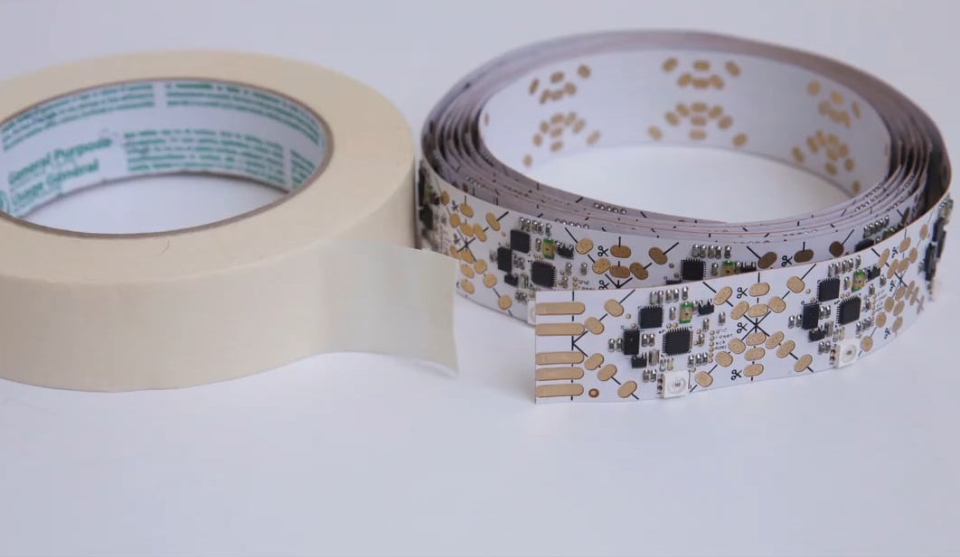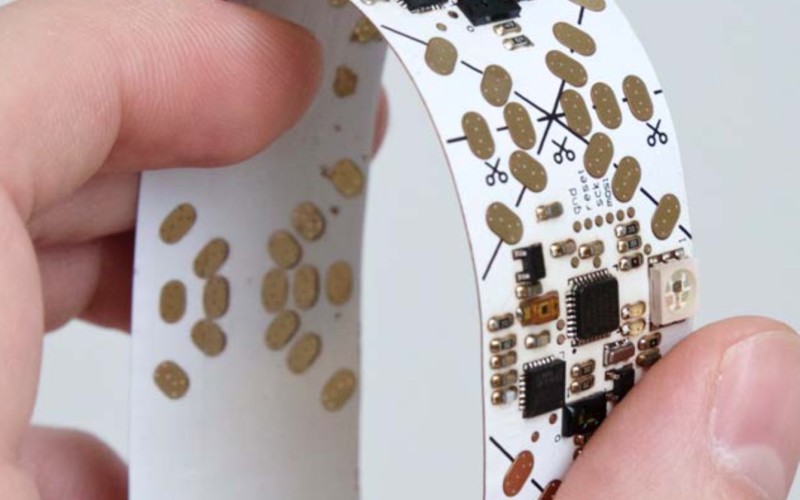Sensor deployment made as simple as cutting and attaching strips of tape.
Developed by students from MIT Media Lab’s Responsive Environments group, SensorTape is a sensor network in the form factor of masking tape. Inspired by the emergence of modular platforms throughout the Maker community, it consists of interconnected and programmable sensor nodes on a flexible electronics substrate. In other words, it’s pretty much a roll of circuits that can be cut, rejoined and affixed to various surfaces.

And what’s even cooler is that it’s a completely self-aware network, capable of feeling itself bend and twist. It can automatically determine the location of each of its nodes and the length of the tape, as it is cut and reattached.
As the neighboring nodes talk to one another, they can use their information to assemble an accurate, real-time 3D model of their assumed shape. Tapes with different sensors can also be connected for mixed functionality.
SensorTape’s architecture is made up of daisy-chained slave nodes and a master. The master is concerned with coordinating the communication and shuttling data to a computer, while each slave node features an ATmega328P, three on-board sensors (an ambient light sensor, an accelerometer, and a time-of-flight distance sensor), two voltage regulators and LEDs. The master contains the same AVR MCU, as well as serial-to-USB converter and a Bluetooth transceiver. The tape can be clipped to the master without soldering using a flexible circuit connector.

In terms of communication protocol, the team chose a combination of I²C and peer-to-peer serial. Whereas I²C supports most of the data transmissions from the master to slave, addresses are ‘assigned dynamically’ over peer-to-peer serial. This enables a fast transfer rate of 100 KHz via I²C with a protocol initialization sequence that accommodates chains of various lengths, up to 128 units long. (For testing, the MIT Media Lab crew developed a 2.3-meter prototype with 66 sensor nodes.)
Aside from its hardware, SensorTape has black lines that instruct where it’s okay to cut and break the circuits using a pair of scissors. As you can see in the image above, this can be either in a straight line or on a diagonal, which allows you to piece together the tape into 2D shapes just as you would when forming a picture frame.
Although still in its infancy, sample use cases of SensorTape include everything from posture-monitoring wearables to inventory tracking to home activity sensing. What’s more, the team has created an intuitive graphical interface for programming the futuristic tape, and it’s all Arduino-friendly so Makers will surely love getting their hands on it and letting their imaginations run wild. You read all about the project in the MIT group’s paper, as well as on Fast Company.

Great. How much is it and where can I buy it?
LikeLike
wonderful! where i can buy it?
LikeLike
Pingback: Blog Review – Monday, February 29, 2016 | Systems Design Engineering Community